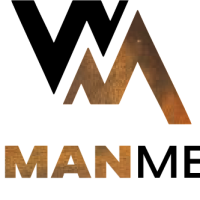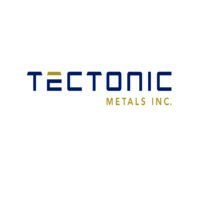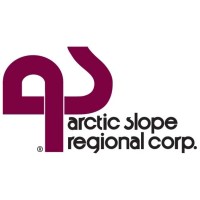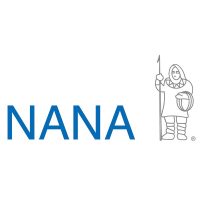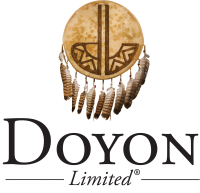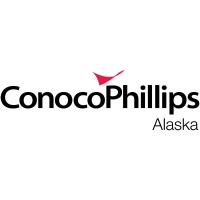Overview
GeoFORCE Alaska is an outreach program at the University of Alaska Fairbanks for rural high school students from the North Slope, Northwest Arctic, and Interior. Students are recruited in 8th or 9th grade and travel around Alaska and throughout the country to learn about geology and career paths in the geosciences.
GeoFORCE Alaska is a four-year program. Each summer, the cohort of students reunites to attend a two week Academy in a different region of the U.S. Over four years, students will practice field geology at destinations including Denali National Park, the Grand Canyon, Crater Lake, Dinosaur National Monument, and Yellowstone. The four-year model of our program is designed to spark interest in the geosciences at a young age and maintain that interest throughout high school and into college.
Mission and Methodology
- Mission
- Academy Trips
- Multi-year Program
- Academic Challenge
- Active Learning
- Teamwork
- Role Models
- Mentors
- Alaskan Applications
Our mission is to raise high school graduation rates in rural Alaska; encourage students to pursue science, technology, engineering and math (STEM) majors in college; and increase the number and diversity of Alaska residents entering Alaska’s technical workforce.
GeoFORCE Alaska uses curriculum designed to reinforce high school grade-level expectations and delivery methods that stress relevance, enhance preparation, and expose students to life on college campuses.
GeoFORCE Alaska takes students to a different region of the United States during each of the four consecutive summer Academies. In addition to reinforcing grade-level expectations, the Academies introduce progressively more challenging field projects.
Each trip includes the students, an instructor from the UAF Dept. of Geology & Geophysics, a teacher from rural alaska to serve as an education coach, two mentors from industry sponsors, and college students who act as neer-peer mentors to the students. Days start early and end late and most of the teaching takes place in the field. The material covered in the field guides is on par with introductory college courses in geology. Every evening there is a review and a quiz about the day’s concepts, followed by classroom activities designed to prepare students for what they will do the next day. Mentors and other professional geologists are given the opportunity to talk with the students about their career paths and work experiences. A final exam is given at the end of the trip; students must score at least 80% on this exam to avoid being placed on probation.
A key difference between GeoFORCE Alaska and other summer science programs for rural students is the emphasis on hands-on field projects that allow students to practice the scientific method. In addition to reading about geology, students have the opportunity to visit spectacular geological locations and see features from all angles. The hands-on approach allows students to make their own observations and suggest original hypotheses. For students who have learned geology primarily through textbooks, this can be a revelation. To paraphrase the third-year essay of one GeoFORCE Alaska student, “…the features are right there in front of you, so you don’t have to try really, really hard to picture them in your head.”
A second distinguishing feature of GeoFORCE Alaska is that it is a four-year program. Students enter the program the summer after 8th or 9th grade and embark on their fourth field experience before or immediately after their senior year. Students must submit transcripts annually; they are required to earn a B average in high school science and math courses throughout the year in order to avoid being placed on probation. Students on probation must draft an academic plan for the coming year outlining a path to improve their performance. They must also demonstrate results in order to be eligible for the next summer Academy.
The four GeoFORCE Academies are both fun and academically intense. The curriculum builds across the program, reinforcing grade-level expectations and giving students a chance to apply the scientific method at spectacular geological locations in and beyond Alaska. Each day, field exercises are followed by interactive evening classes, a review session, and a quiz. Students are required to score at least 80% on a final exam in order to avoid being placed on probation.
Evening classes are designed to prepare students for daily field projects. Lectures emphasize active learning strategies that require students to engage with the material and solve problems, rather than passively taking notes. GeoFORCE students participate in lectures by brainstorming with peers, answering clicker questions, identifying rock samples, and constructing models or concept diagrams.
Upon arrival at the summer Academy, GeoFORCE students are grouped into teams of six students from multiple villages. These teams work together throughout the excursion to complete projects, create daily presentations for review sessions, and solve problems through brainstorming and peer instruction. The teams change every year to expand the students’ social network and increase their confidence meeting new people and collaborating with students from other communities.
Each team is guided and facilitated by a graduate or undergraduate student counselor, who also serves as a role model. Counselors are both friends and instructors. They help break the ice, keep groups on task, reward and encourage team member achievements, and provide additional explanations in the field. Counselors also model good academic practices and tutor students at their request. Exit surveys unanimously indicate that students find their counselors to be friendly and/or consider them friends. Working closely with counselors pursuing undergraduate or graduate degrees helps students to envision the next step in their own education.
On each excursion, GeoFORCE students and staff are joined by one or two mentors, employed by industry sponsors. Mentors are assigned to different student teams throughout the week and serve as facilitators or instructors, as determined by the needs or requests of the team. Over the course of four summer Academies, mentors present students with firsthand descriptions of the nature and variety of jobs available to geoscientists. In addition to providing a better sense of what geoscientists actually do at work, interaction with mentors from industry and Native corporation sponsors expands students’ network of professional contacts, which may lead to future internships or jobs.
Examples and field projects are designed to demonstrate relevance to Alaskan geology and Alaskan issues. The Alaska Academy field excursion was developed specifically to expose students from villages on the Arctic Ocean coast to iconic features of Alaskan geology, including glaciers, river systems, coal deposits, and mountains. Guidebooks for the other three trips cite Alaskan examples and specify connections between geologic features in Alaska and sites GeoFORCE visits in the contiguous 48 states. For example, volcanoes visited during the Northwest Academy share a geologic setting with Alaskan volcanoes, and students are asked to brainstorm lists of similarities and differences between the rocky coastline of Oregon and the coastlines near their villages. Discussions with mentors (see above) also help uncover connections between geoscience jobs and Alaska’s economy.
Academic Partners & Results
GeoFORCE Alaska is developed and delivered in partnership with the highly successful GeoFORCE Texas program, operated by the Jackson School of Geosciences at The University of Texas at Austin. GeoFORCE Texas was created to increase high school graduation and workforce diversity in rural southwest Texas. In order to encourage rural Alaskan high school students to pursue scientific interests and develop scientific abilities, GeoFORCE Alaska was launched at UAF in the summer of 2012 at the request and expense of industry sponsors.
The first cohort of 18 GeoFORCE Alaska students from the North Slope Borough completed the program in 2015. 94% of these students have graduated from high school, at least 72% planed to attend college in fall 2016, and 33% plan to major in geoscience.
The second cohort of 23 students from the North Slope and Northwest Arctic completed the program in 2019. 22 have graduated from high school or earned a GED, for a completion rate of 95.7%. Twelve of the 23 students in this cohort (52%) matriculated at a college or university, with three majoring or pre-majoring in Geoscience and five choosing to major in a STEM field.
A third cohort of 28 students from the North Slope and Northwest Arctic Boroughs and Interior Alaska completed a hybrid Academy and graduated from the program in June 2023. By June 2024, 100% of these students had completed high school, and 15 (54%) had either already started college or were planning on attending in the fall of 2024.
The fourth cohort of 36 students from villages served by ASRC, NANA, Doyon, Calista, and Bristol Bay, completed the First Year Academy in 2024.
GeoFORCE Staff
-
 Dr. Sarah Fowell Program Director
Dr. Sarah Fowell Program DirectorSarah holds a PhD in Geology from Columbia University. She has been a professor at the University of Alaska Fairbanks since 1997, where she designs and teaches courses such as Historical Geology and Paleobiology. As Director of GeoFORCE Alaska, she is responsible for raising funds and designing instruction for the summer academy trips.
-
 Justine Schmidt Program Coordinator
Justine Schmidt Program CoordinatorJustine comes from a diverse career background that includes outdoor education, crisis counseling, academic advising, and GED coordinating for rural Alaska. Although no expert in geology she has a Masters in Environmental Education and a deep love of the outdoors and our public lands.




